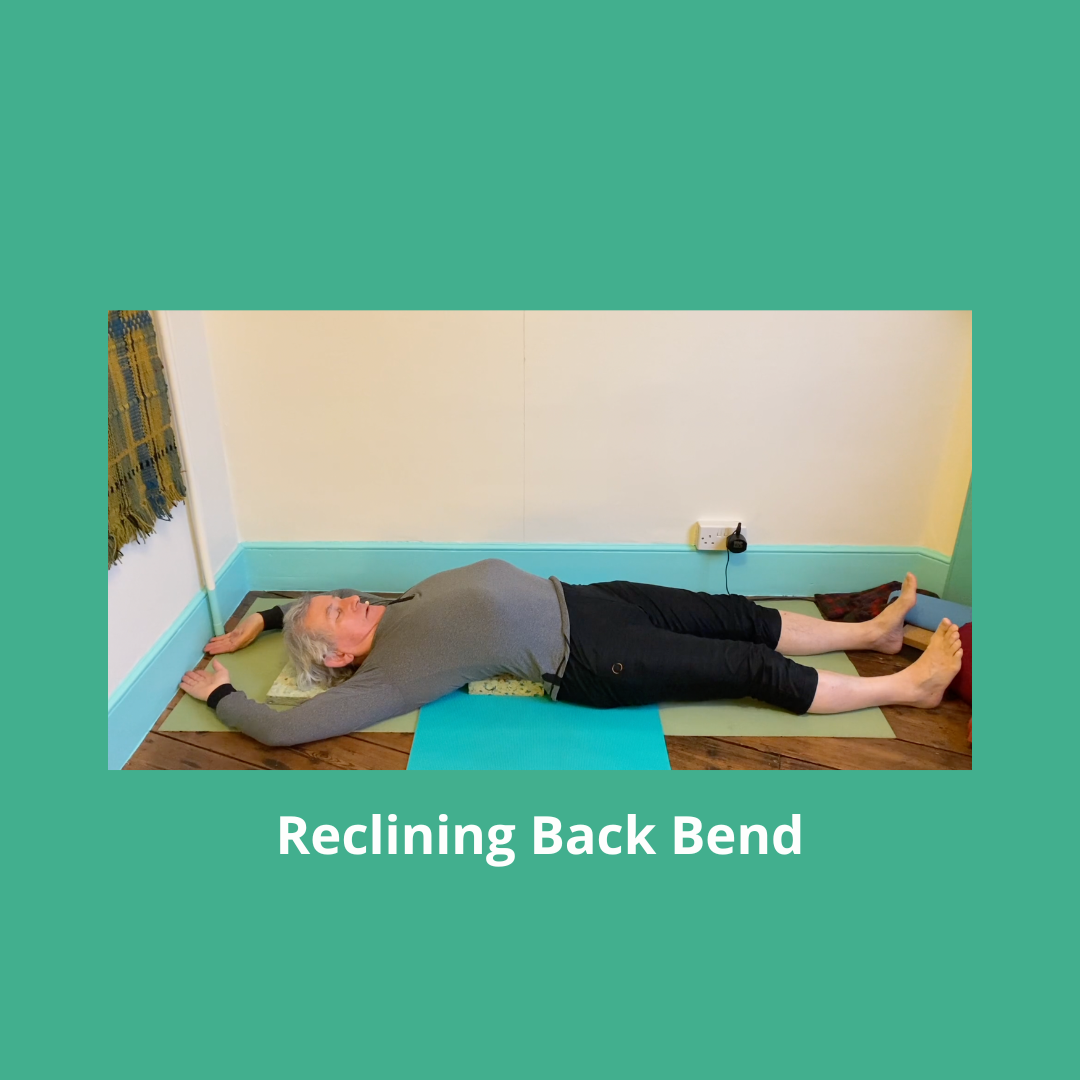In this blog I share my top 5 stretches for my ankylosing spondylitis.
I've had AS symptoms since 1973, started regular yoga classes in 1990, but was only diagnosed in 2009.
I used to think “I love yoga because it unties the knots my body gets into”. My class was at 5pm on Friday afternoons. By 5.20pm I was thinking those knots are being untied. Didn't know why or how, but I knew it for certain.
Over the 30+ years that I've been practising yoga, and the nearly 50 years that I've had AS, these are my 5 top yoga poses for untying my AS knots.
I used to think “I love yoga because it unties the knots my body gets into”. My class was at 5pm on Friday afternoons. By 5.20pm I was thinking those knots are being untied. Didn't know why or how, but I knew it for certain.
Over the 30+ years that I've been practising yoga, and the nearly 50 years that I've had AS, these are my 5 top yoga poses for untying my AS knots.
1. Standing Single Leg Stretch

This was the start of me realising that if you stretch in your legs, you relieve pain in your spine.
One of the symptoms of kyphosis is tight hamstrings.
Kyphosis is that excessive outwards curve in the upper spine that can make us round shouldered.
So I was loosening up my hamstrings, muscles at the back of the thigh.
This was the start of me realising that if you stretch in your legs, you relieve pain in your spine.
2. Pyramid Pose

Also known as Parsvottanasana (This is in Sanskrit, an ancient language, but understood by yogis the world over. That’s why I love to use the Sanskrit words for a yoga pose).
This gives a stretch in the hamstrings, and all the ligaments and tendons that get enthesitis (inflammation that causes that pain down the buttocks and hips) around the sacro-iliac joints.
My yoga teachers, Anna and then Jeremy, used to introduce this to the class as “Geoff’s favourite” because I'd always be going “Oh I love this one”.
Again, it was relieving SI pain. But I was practising this for 20 + years before I knew how or why.
This gives a stretch in the hamstrings, and all the ligaments and tendons that get enthesitis (inflammation that causes that pain down the buttocks and hips) around the sacro-iliac joints.
My yoga teachers, Anna and then Jeremy, used to introduce this to the class as “Geoff’s favourite” because I'd always be going “Oh I love this one”.
Again, it was relieving SI pain. But I was practising this for 20 + years before I knew how or why.
3. Standing Forward Bend

Also known as Uttanasana.
Why would turning your body upside down help your AS pain and stiffness? Why would anybody even think about dangling your upper body? But when I did it, I felt almost immediate relief from my “bad back”.
It wasn't until 2010 that an AS Specialist Physiotherapist told me, after I was finally diagnosed, that stretching breaks up the inflammation. This was her highly experienced, professional opinion, gained after two decades specialising in Physiotherapy with AS patients.
Creating spaces between the vertebrae, the bones in your spine, works against the process of AS.
The process is, though not everybody gets all of these:
Inflammation
Erosion of bone, then growth of boney bits called Syndesmophytes and hardening/shortening of soft tissue like ligaments and tendons.
Fusion of joints.
In Uttanasana, you are using the weight of your head, arms and shoulders to lengthen the spine, stretch it out.
4. Standing Table Top Stretch

So if we break up the inflammation, is that disease amending? Not if it’s not safe.
40% of our members had tried yoga but found that regular yoga did not help.
We realised that yoga has to be modified for AS, for safety. There is another Sanskrit word, ahimsa, the absence of injury.
This is a Yoga for AS variation of a classic yoga pose Downward-facing Dog. This version is safer and accessible and designed to be pain relieving.
5. Reclining Back Bend

There is one symptom of AS that really does motivate me to stretch it out - getting round shoulders.
Backbends can help us not to develop that hump in the top of our spine.
In this modification, you just lie down on your back on your bed, or sofa, or on the floor if you can, and lie over a yoga block, or a cushion or a book up to about 5 centimetres, 2 inches thick, or less if you prefer.
In this modification, the top edge of the block is along a line just below the shoulder blades, so that both shoulders and buttocks are in touch with whatever you are lying on.
Just lie there for a couple of minutes, relax and let gravity do the work.
Backbends can help us not to develop that hump in the top of our spine.
In this modification, you just lie down on your back on your bed, or sofa, or on the floor if you can, and lie over a yoga block, or a cushion or a book up to about 5 centimetres, 2 inches thick, or less if you prefer.
In this modification, the top edge of the block is along a line just below the shoulder blades, so that both shoulders and buttocks are in touch with whatever you are lying on.
Just lie there for a couple of minutes, relax and let gravity do the work.
These are my favourite yoga poses for relieving AS pain and stiffness.
Enjoy.
You can learn these in far more detail by exploring a Live Online Class or the Virtual Library.
Both of which you can try for free below.


